You are here
Federal Deficit and Debt: December 2022
Every month the U.S. Treasury releases data on the federal budget, including the current deficit. The following contains budget data for December 2022, which was the third month of fiscal year (FY) 2023.
Current Federal Deficit
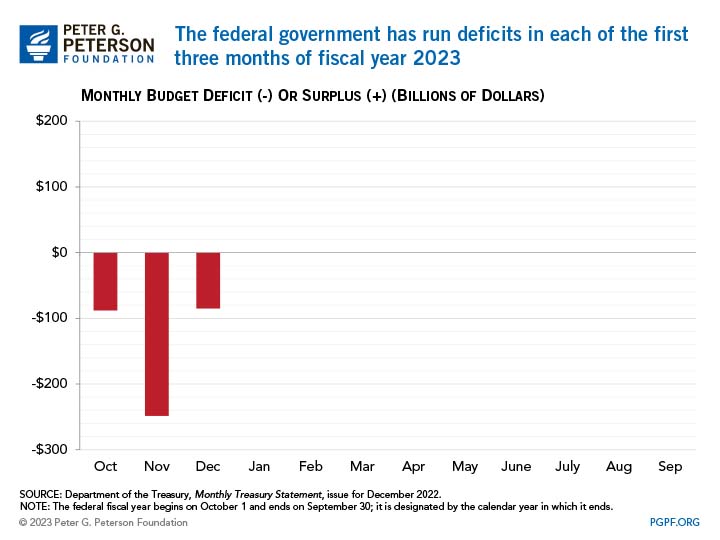
- Federal Budget Deficit for December 2022: $85 billion
- Federal Budget Deficit for December 2021: $21 billion
The federal government ran a deficit of $85 billion in December 2022, $64 billion higher than the deficit of $21 billion that was recorded in December 2021. Spending was up by $32 billion relative to last year; about half of that amount stems from higher interest payments, largely because interest rates have risen. Total revenues fell by $32 billion — collections of individual income taxes decreased by $38 billion; that decline was partially offset by small increases in payroll and corporate income taxes.
Cumulative Federal Deficit
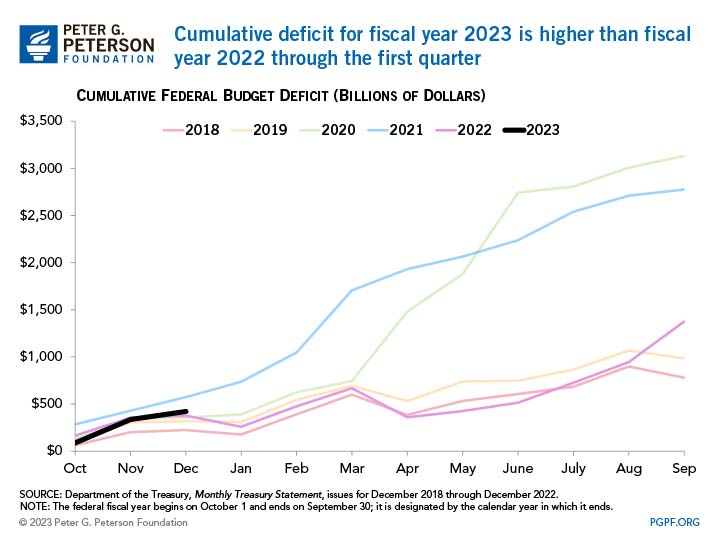
- Cumulative FY23 Deficit: $421 billion
- Cumulative FY22 Deficit: $378 billion
The cumulative deficit so far this year is $44 billion above last year’s level. However, because October 1 fell on a weekend in 2022, certain federal payments were shifted into September, leading to a $63 billion decrease outlays for this fiscal year. Furthermore, like FY22, certain payments that would have occurred on January 1, a holiday, were made in December Without such shifts, the cumulative deficit for FY23 to date would have been $105 billion greater than the first quarter of FY22.
For the first three months of FY23, total outlays were $1.4 trillion, around $17 billion higher than the same period in the previous year (not accounting for timing shifts). Growth in outlays was driven by interest payments, which were $43 billion above the amount recorded in the first quarter of FY22. In addition, outlays were higher by $10 billion or more in areas such as Social Security, student loans, and Medicaid. Partially offsetting those increases in outlays were decreases in advance payments for the child tax credit (which are recorded as outlays), Medicare (because some payments were shifted into FY22), and the Public Health and Social Services Emergency Fund.
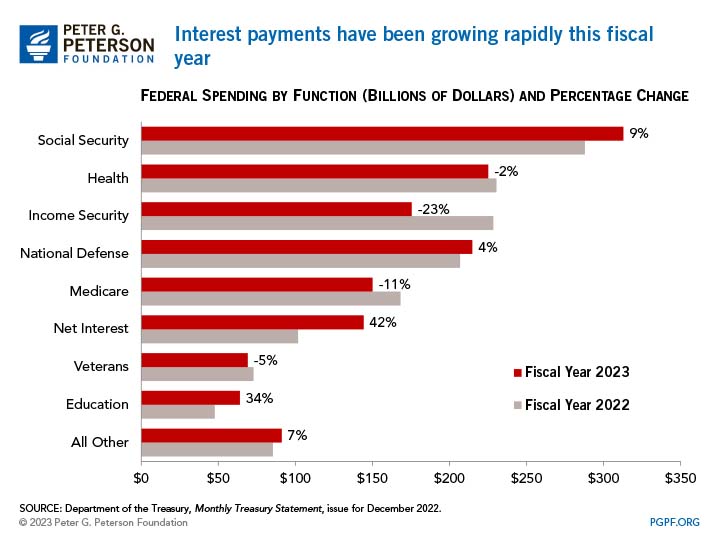
Through the first quarter of FY23, total revenues have decreased by $26 billion compared to the previous year. The largest decreases were in individual income taxes, which fell by $31 billion, and remittances from the Federal Reserve, which were down by around $26 billion. Partially offsetting those effects include a $21 billion increase in payroll taxes and a $7 billion increase in corporate income taxes.
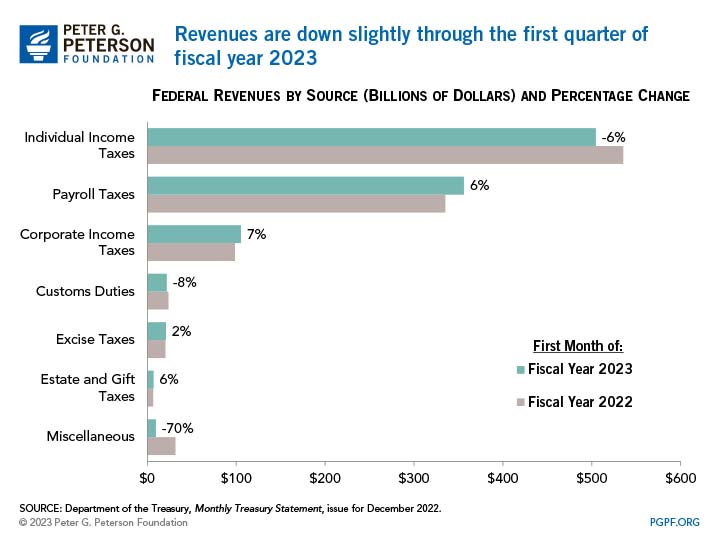
National Debt
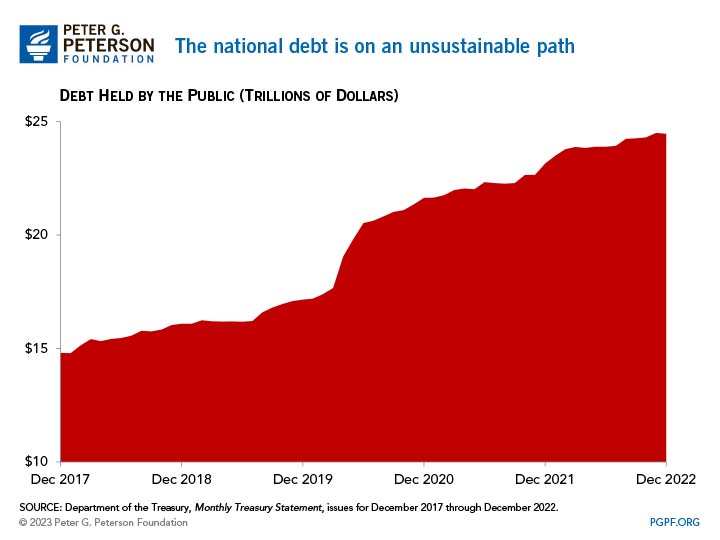
- Debt Held by the Public at the end of December 2022: $24.5 trillion
- Debt Held by the Public at the end of December 2021: $23.1 trillion
Since the financial crisis in 2008, debt held by the public has nearly tripled relative to the size of the economy and is projected to grow even more in the future. Debt and deficits are on an unsustainable upward trajectory. With the arrival of a new Congress in this month, legislators are encouraged to work with the Biden Administration to create bipartisan solutions to improve the country’s fiscal outlook.
